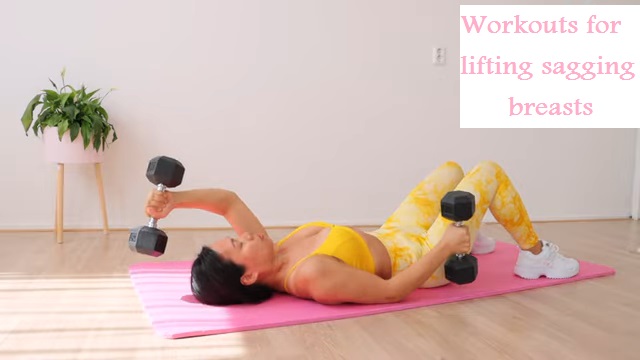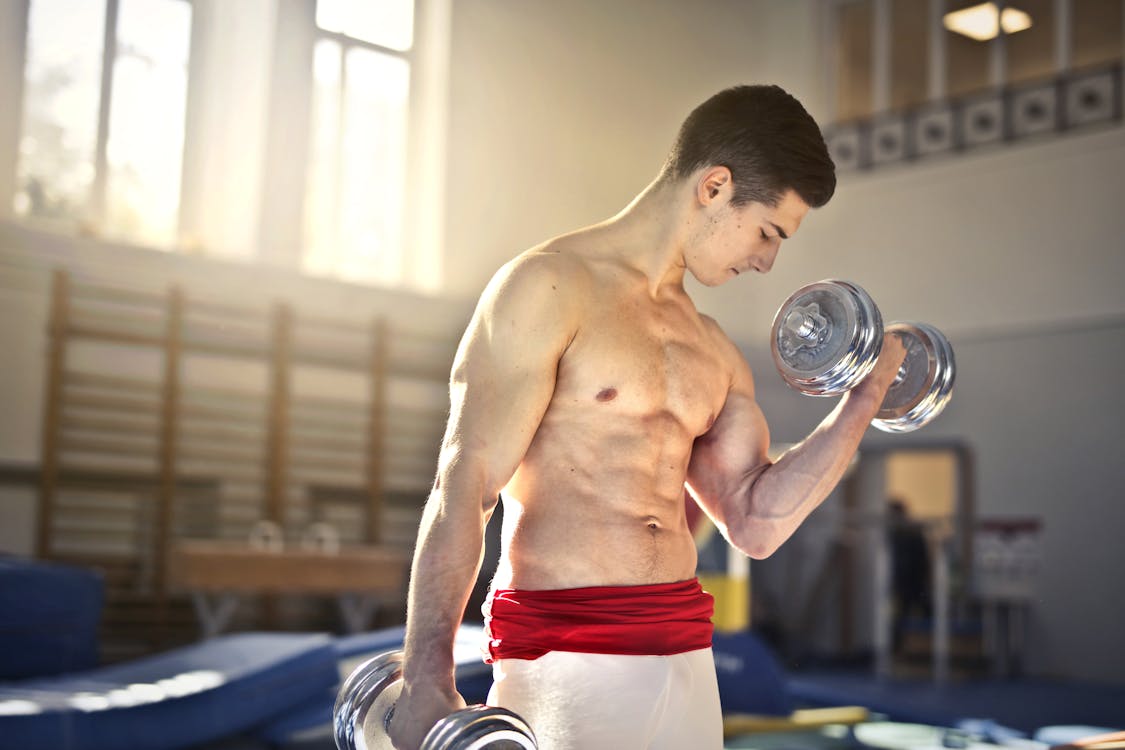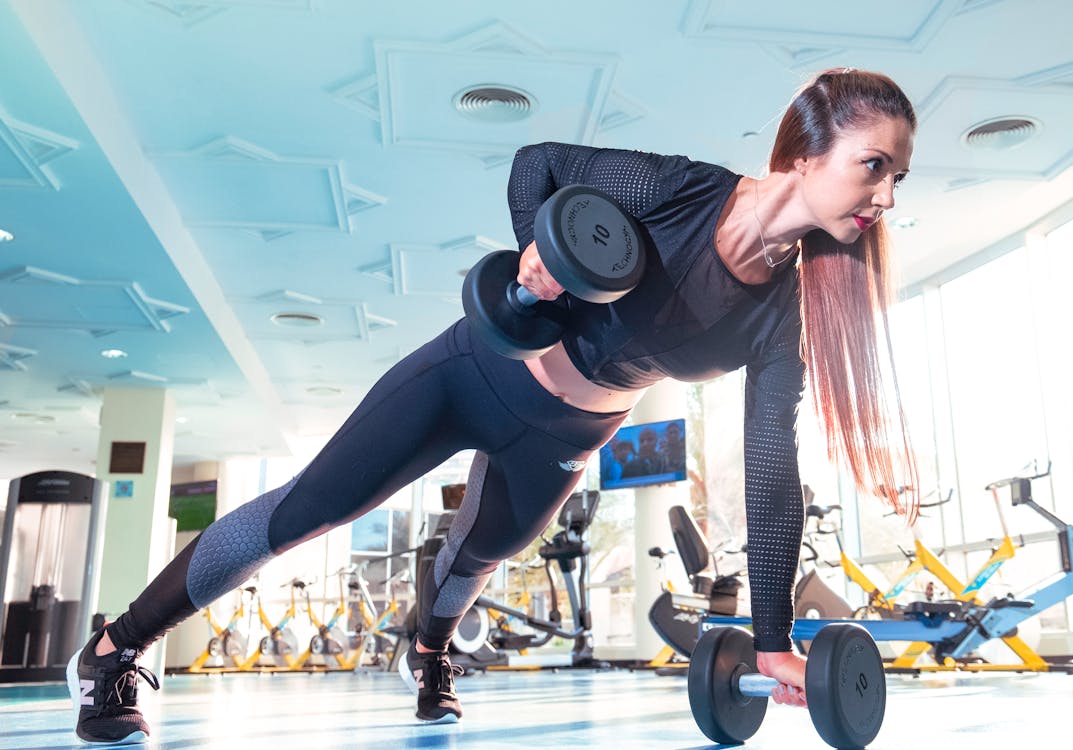
As fitness enthusiasts, we strive to achieve a strong and healthy body. However, one area that often gets overlooked in our fitness routines is the breasts. Many women, particularly fitness girls, may experience sagging breasts due to factors like age, weight loss, or lack of proper chest exercises. But fret not! In this article, we will explore some of the best workouts specifically designed to lift sagging breasts. Incorporating these exercises into your fitness regimen will not only help you maintain a firm and perky chest but also boost your overall confidence. Let’s get started!
Push-Ups For Sagging Breasts:
Push-ups have long been hailed as a versatile and effective exercise for enhancing the strength and appearance of the chest muscles, specifically the pectoralis major and minor. While their primary focus might be on building upper body strength and improving overall fitness, push-ups can also contribute to addressing concerns such as sagging breasts.
The breasts, composed of glandular tissue and fat, sit atop the pectoral muscles. Over time, factors like gravity, aging, pregnancy, and changes in weight can lead to a loss of firmness in the breast tissue, causing them to appear less perky. While push-ups themselves do not directly impact the breast tissue, they do play a crucial role in strengthening the muscles that provide essential support to the breasts.
Incorporating push-ups into your regular workout routine can yield gradual yet noticeable improvements in the appearance of your breasts. Whether you’re aiming to counteract the effects of aging, or pregnancy, or simply seeking to enhance your overall chest aesthetics, push-ups can be a valuable addition to your fitness regimen.
For those new to push-ups or looking to tailor the exercise to their fitness level, starting with a modified version is a smart approach. This entails positioning yourself on your hands and knees rather than your toes, reducing the load on the chest muscles. As you gain confidence and strength, progressing to a full push-up position—where your body is supported by your toes and hands—is the next step.
In terms of reps and sets, beginning with three sets of 10 to 12 repetitions is a good baseline. This helps ensure that you’re effectively targeting the muscles without straining them. Over time, gradually increasing the number of reps or sets, or even adding variations like inclined or declined push-ups, can intensify the workout and foster continued progress.
Remember that consistency is key when it comes to any fitness endeavor. It might take weeks or even months to see noticeable changes in the firmness and appearance of your breasts. Combining push-ups with a well-rounded fitness routine that includes cardiovascular exercises, strength training, and a balanced diet can further contribute to achieving your desired results.
It’s important to approach this with realistic expectations. While push-ups can certainly help in toning the muscles and providing a natural lift, they might not completely reverse significant sagging. In such cases, consulting with a medical professional or fitness expert can provide personalized guidance on exercises and lifestyle changes that best address your concerns.
Chest Press To Lift Sagging Breasts:

Addressing concerns related to sagging breasts often involves a multifaceted approach that combines targeted exercises with a comprehensive fitness regimen. Among the exercises that stand out for their potential to provide a natural lift to the breasts is the chest press. This exercise not only engages the chest muscles but also contributes to overall upper body strength and posture improvement.
The chest press, when performed correctly, can effectively target the pectoralis major muscles—the muscles that lie beneath the breast tissue and play a pivotal role in maintaining breast firmness. Incorporating this exercise into your routine can contribute to a more toned and uplifted appearance over time.
To perform the chest press, you have a couple of options: using dumbbells or utilizing a chest press machine available at most gyms. Both variations offer their own advantages, allowing you to tailor your approach based on equipment availability and personal preference.
If you opt for dumbbells, start by positioning yourself on a bench or on the floor. Bend your knees, ensuring a stable and grounded base. With a dumbbell in each hand, held with your palms facing forward and your wrists in a neutral position, begin the exercise. Gently press the weights upward toward the ceiling while extending your arms fully. The controlled movement is key here—avoid using momentum to lift the weights. Once the weights are fully extended, gradually lower them back down to the starting position.
Executing the chest press with proper form is crucial to effectively engage the chest muscles and minimize the risk of injury. Focus on a controlled and deliberate movement throughout the entire range of motion. Keep your core engaged, your back comfortably resting against the bench or floor, and your shoulders relaxed. This ensures that the targeted muscles are doing the work and that the exercise is as effective as possible.
As with any exercise, consistency is key to achieving results. Aim for three sets of 10 to 12 repetitions to begin with, gradually increasing the intensity as your strength improves. Over time, you might consider adjusting the weights, increasing the number of sets, or experimenting with variations to keep challenging your muscles and promoting continued progress.
It’s important to remember that exercises alone might not completely reverse significant sagging. A comprehensive approach that includes proper nutrition, hydration, cardiovascular exercises, and a balanced fitness routine can greatly contribute to achieving your desired outcomes.
Dumbbell Flyes For Sagging Breasts:

When it comes to combating sagging breasts and enhancing the firmness of your chest area, targeted exercises can play a pivotal role in your fitness routine. Dumbbell flyes, in particular, stand out as a powerful exercise to include in your regimen. By engaging and strengthening the chest muscles, dumbbell flyes contribute to a lifted and toned appearance, addressing concerns related to breast sagging.
Executing dumbbell flyes effectively requires attention to detail, form, and consistency. This exercise focuses on the pectoralis major muscles—the primary muscles underneath the breast tissue that provide essential support. By engaging these muscles through controlled movement, you can enhance the overall appearance of your chest area.
To perform dumbbell flyes, start by positioning yourself on a bench or the floor. Ensure that your knees are bent, creating a stable foundation. Grasp a dumbbell in each hand, maintaining a comfortable yet controlled grip. Lie down on the bench or floor with your arms extended out to the sides, parallel to the ground. Keep a slight bend in your elbows to avoid unnecessary strain.
The key to a successful dumbbell flye lies in controlled movement and mindful engagement of your chest muscles. Begin by slowly bringing the dumbbells together above your chest, maintaining a slight bend in your elbows. As you do this, focus on the sensation of your chest muscles contracting and working. This mind-muscle connection can amplify the effectiveness of the exercise and ensure that you’re targeting the right muscles.
After bringing the dumbbells together, slowly lower them back down to the starting position in a controlled manner. This controlled eccentric (negative) phase of the movement is just as important as the lifting phase, as it engages your muscles while they lengthen, contributing to muscle development and toning.
When determining the number of sets and reps, starting with three sets of 10 to 12 repetitions is a reasonable approach. However, you can adjust these numbers based on your fitness level and progression. As your strength improves, consider gradually increasing the weight, adding more sets, or incorporating variations to continue challenging your muscles and encouraging growth.
It’s essential to approach this exercise with patience and consistency. While you may not see immediate results, incorporating dumbbell flyes into a well-rounded fitness routine that includes cardiovascular exercises, proper nutrition, and other targeted exercises can contribute to achieving your desired outcomes.
Chest Dips For Sagging Breasts:

When the quest to counteract sagging breasts leads you to explore effective exercises, chest dips emerge as a formidable contender. These dynamic movements challenge not only your chest muscles but also your triceps and shoulders, making them a valuable addition to your fitness arsenal. As you integrate chest dips into your routine, you’ll discover the rewarding blend of challenge and potential for uplifting results.
Chest dips are a multifaceted exercise that involves utilizing parallel bars or a dip station. The engagement of multiple muscle groups—chiefly the chest, triceps, and shoulders—renders this exercise an excellent choice for enhancing the overall strength and appearance of your upper body.
To begin the chest dip maneuver, position yourself between the parallel bars or dip station. Your hands should grip the bars securely, with your arms fully extended. As you initiate the movement, lower your body by flexing your elbows. The goal is to lower yourself until your chest is level with the bars, allowing for a full range of motion that effectively engages your chest muscles.
The push-back up to the starting position is where you harness the power of these dips. The contraction of your chest, triceps, and shoulders as you raise your body is what contributes to the strengthening and toning effects over time.
If you find performing full chest dips challenging initially, fret not; modifications are your allies. You can begin by placing your feet on the ground and bending your knees. This reduces the intensity while allowing you to gradually build up the required strength and confidence. As your fitness journey advances, transitioning to full chest dips becomes a natural progression, an achievement that underlines your growing capabilities.
To structure your sets and reps effectively, starting with three sets of 8 to 10 repetitions provides a solid foundation. This range balances the requirement for proper form with the objective of pushing your limits. Yet, remember that quality is paramount. Strive for controlled movements throughout each rep, focusing on the muscles being targeted and maintaining a steady pace.
As with any fitness pursuit, patience is your ally. While the initial results might not be immediate, consistency, dedication, and complementary exercises can foster cumulative progress. A holistic fitness approach, including cardiovascular exercises, proper nutrition, and other targeted exercises, further enhances the transformative potential of chest dips.
It’s essential to acknowledge that individual progress varies. Results may manifest differently for each person due to factors such as genetics, lifestyle, and other variables. Embrace the journey, celebrate the small victories, and keep your eyes on the goal of a firmer and more confident chest area.
If you’re uncertain about form or the right approach, consulting with a fitness professional or medical expert ensures that you receive personalized guidance tailored to your unique needs. With chest dips, you’re not only sculpting your body but also empowering yourself on a path to greater strength and self-assurance.
Resistance Band Exercises:

Diversifying your fitness routine with resistance band exercises introduces a realm of versatile and effective options that can elevate your workout regimen, particularly when it comes to targeting and toning the chest muscles. Among the plethora of exercises available, the resistance band chest press stands out as a gem that can help you achieve your goal of a firmer and more defined chest area.
Resistance bands are fantastic tools that provide adjustable levels of tension, accommodating various fitness levels and allowing for progressive resistance. This makes them suitable for both beginners and experienced individuals seeking to challenge their muscles in new ways.
The resistance band chest press adds a dynamic twist to traditional chest exercises. As you engage in this exercise, you’ll feel the deliberate activation of your pectoral muscles, triceps, and anterior deltoids, collectively contributing to enhanced upper body strength and aesthetics.
To embark on the resistance band chest press, you’ll need a resistance band and a sturdy anchor point. Fasten the band securely at chest height to a stationary object, ensuring stability. Grasp the handles in each hand, with your arms bent at a 90-degree angle. Stepping back from the anchor point will create the necessary tension in the band, a vital aspect of the exercise.
As you initiate the press, focus on maintaining proper form and control. Push the handles forward, extending your arms fully while feeling the tension in the band. This controlled extension engages the targeted muscles optimally. The return to the starting position, though seemingly a transition phase, is equally crucial. Slowly bringing your arms back to the initial bent position against the resistance activates the muscles as they contract.
Incorporating the resistance band chest press into your routine involves structuring sets and repetitions for optimal impact. Beginning with three sets of 10 to 12 repetitions provides a balanced approach, emphasizing both intensity and form. The resistance level can be adjusted by choosing a band with appropriate tension, offering room for progression as your strength improves.
Consistency is the cornerstone of any fitness endeavor. Combining resistance band exercises with other targeted movements and a well-rounded routine encompassing cardiovascular activities and proper nutrition can amplify your results. Over time, the cumulative effects of these efforts contribute to a more defined and uplifted chest area.
It’s worth noting that individual progress varies based on factors such as genetics, lifestyle, and adherence to the regimen. Be patient and celebrate each milestone along the way.
For those new to resistance band exercises or uncertain about proper form, seeking guidance from a fitness professional can ensure that you’re on the right track. Your fitness journey is a personal one, and with the resistance band chest press as part of your repertoire, you’re taking tangible steps toward a stronger, more confident you.
Conclusion:
In the pursuit of addressing concerns related to sagging breasts and achieving a more toned and uplifted chest area, the information presented in the preceding articles offers a comprehensive and insightful guide. The exercises discussed, from classic push-ups to dynamic resistance band movements, collectively underscore the importance of targeted workouts in fostering muscle strength, toning, and overall enhancement.
Starting with the time-tested push-up, we learn that by incorporating this fundamental exercise into our routine, we can naturally lift the breasts by strengthening the underlying muscles. The progression from modified to full push-up positions exemplifies the concept of gradual improvement, reinforcing the significance of patience and consistent effort in achieving desired outcomes.
Moving to the chest press, a spotlight is cast on the role of proper form in maximizing the impact of each repetition. Whether utilizing dumbbells or a chest press machine, the exercise exemplifies the marriage of controlled movement and targeted muscle engagement, both essential in fostering chest muscle development.
Enter dumbbell flyes, a nuanced exercise that emphasizes the mind-muscle connection. This concept brings awareness to muscle activation during the exercise, allowing for a more effective workout. With clear instructions on form and technique, the article underscores the potential of tailored exercises to address specific concerns.
Lastly, resistance band exercises showcase the adaptability and innovation of modern fitness routines. With the resistance band chest press as a prime example, we delve into the benefits of utilizing dynamic tension to challenge muscles and stimulate growth. The versatility of resistance bands caters to different fitness levels and serves as a reminder that diversity in exercise can lead to well-rounded results.
Collectively, these articles underscore that while exercises play a significant role in addressing sagging breasts, they are just one facet of a holistic approach. Proper nutrition, cardiovascular exercises, and consulting with experts when necessary all contribute to a comprehensive strategy. The journey towards achieving a more confident and uplifted chest area is one of dedication, persistence, and empowerment, culminating in a greater sense of well-being and self-assurance.



